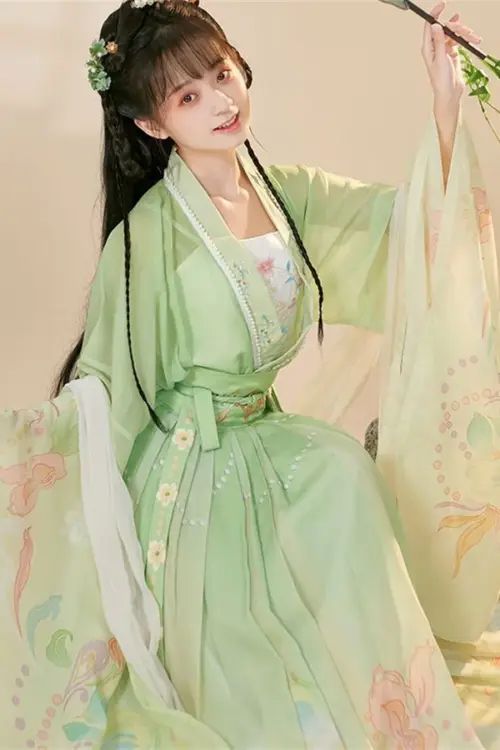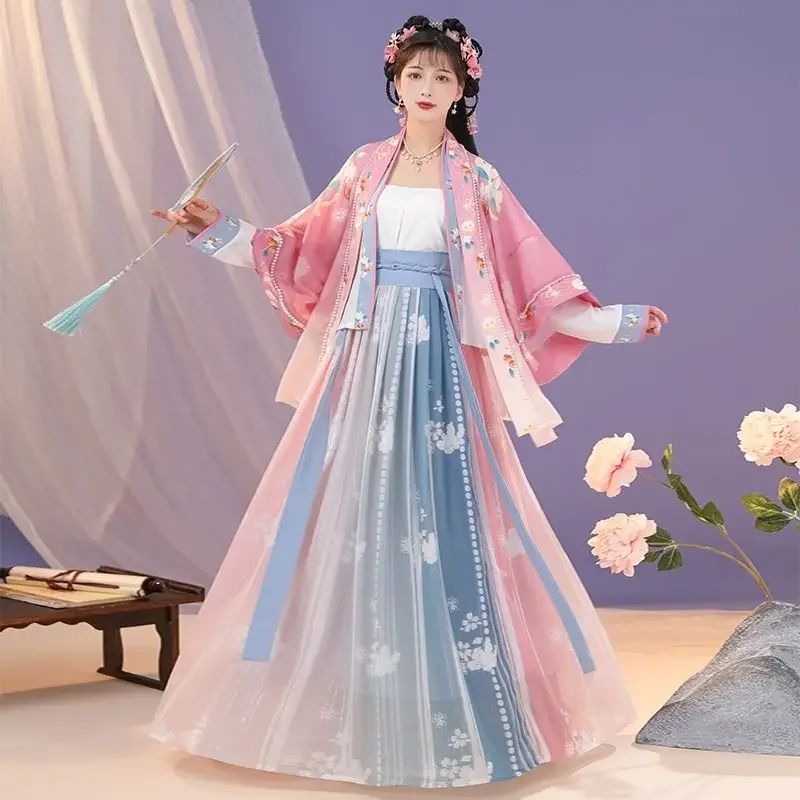The Resurgence of Hanfu: A Cultural Renaissance in Modern China
Einführung
In recent years, China has witnessed a resurgence in the interest in Hanfu, the traditional attire of the Han Chinese people. This cultural renaissance is driven by a desire to reconnect with China’s rich heritage and promote a sense of national pride.

Origin of the Revival
The revival of Hanfu began in the early 2000s when a small group of enthusiasts started wearing traditional clothing in public. Though initially met with curiosity and even ridicule, the movement gradually gained momentum as more people began embracing Hanfu’s beauty and cultural significance.
Cultural and Societal Impact
Today, Hanfu is worn by people from various walks of life, including students, professionals, celebrities, and even government officials. It’s common to see Hanfu at cultural events, festivals, and even in everyday settings. The revival has fostered a deeper appreciation for traditional culture and a sense of unity among the Han Chinese people.
Additionally, this resurgence has spurred the growth of a thriving Hanfu industry, with businesses dedicated to producing and selling traditional clothing, accessories, and fabrics. Hanfu is now much more than a fashion trend; it’s a cultural movement that reflects a deep desire to reconnect with Chinese roots.
Hanfu in the Digital Age: Online Communities and the Revival of Tradition
Einführung
The digital era has played a significant role in the revival of Hanfu. Once confined to history books, Hanfu is now experiencing a resurgence, with online communities being the driving force behind its comeback.
Online Platforms and Their Role
Social media platforms like Weibo and WeChat have become virtual meeting places for Hanfu enthusiasts. These platforms allow individuals to showcase their Hanfu outfits, discuss historical aspects, and organize events, fostering a community passionate about preserving traditional Chinese attire.
Resources and Accessibility
The internet has made it easier for people to access information about Hanfu. Websites and forums provide comprehensive guides on Hanfu’s history, styles, and techniques. This has empowered a new generation of designers and artisans to create authentic Hanfu pieces, blending tradition with modern innovation.
E-commerce and the Hanfu Market
E-commerce platforms have also contributed to Hanfu’s availability. A vast selection of Hanfu garments, accessories, and materials are now just a click away, catering to a growing demand for traditional attire. This easy access has made it simpler for individuals to embrace Hanfu, contributing to its popularity.
Offline Events and Cultural Festivals
The resurgence of Hanfu extends beyond online spaces. In recent years, enthusiasts have organized numerous offline events such as cultural festivals, fashion shows, and parades. These gatherings allow individuals to fully immerse themselves in Hanfu culture while promoting its appreciation among the general public. These events celebrate not only the clothing but the rich traditions and history that Hanfu represents.
A Growing Cultural Movement
The Hanfu revival is much more than a fleeting fashion trend; it signifies the enduring power of Chinese tradition. For many young people, Hanfu represents a reconnection to their cultural roots, and wearing the traditional attire allows them to celebrate the unique beauty of their ancestors’ craftsmanship.
Future of Hanfu in the Digital Age
As the digital age continues to evolve, the Hanfu movement is likely to thrive and expand. Online communities will remain key hubs for cultural exchange and knowledge sharing, while e-commerce platforms will ensure the easy acquisition of Hanfu garments. This combination of tradition and technology is likely to keep Hanfu relevant and vibrant in modern Chinese society.
Hanfu as a Symbol of National Identity: Embracing Heritage in a Globalized World
Einführung
In recent years, Hanfu has become more than just traditional clothing—it has emerged as a symbol of national identity. This revival is driven by a desire to reconnect with China’s rich cultural heritage, serving as an expression of national pride in an increasingly globalized world.

Historical Background of Hanfu
Hanfu’s history dates back to the Han dynasty (206 BCE – 220 CE). Over centuries, various dynasties left their unique imprints on the attire, resulting in diverse styles and designs. However, with the rise of Western influence during the 19th and 20th centuries, Hanfu began to fade from daily life.
Der Modern-Day Hanfu Revival
In the late 20th century, a growing number of Chinese people started rediscovering their traditional culture. This rekindled interest in Hanfu, which became a potent symbol of national pride and cultural identity. Today, Hanfu is worn by people across different professions and social classes, from students and professionals to politicians and celebrities.
Mixed Reactions to the Hanfu Movement
While many embrace the Hanfu revival as a positive movement to preserve China’s cultural heritage, it has also sparked some debate. Critics argue that it may represent cultural nationalism or a rejection of modernity. However, for many, Hanfu is simply a celebration of their heritage and a way to express pride in their history.
Cultural Significance and Future of Hanfu
A Reflection of Changing Times
The resurgence of Hanfu reflects China’s evolving relationship with its past. The desire to wear traditional attire is not just about fashion but a deeper connection to cultural roots. As China grows on the global stage, Hanfu serves as a powerful representation of national identity, blending tradition with modern sensibilities.

Shaping National Identity
The Hanfu revival is expected to continue playing a vital role in shaping China’s national identity. By embracing their traditional clothing, the Chinese people are preserving a significant part of their heritage while also influencing the global perception of their culture. The movement represents a blend of cultural preservation and forward-thinking innovation.
In conclusion, the revival of Hanfu exemplifies the powerful relationship between tradition and modernity. By rediscovering their traditional attire, the Chinese people are not only preserving their past but also carving out a new path for their cultural future.
